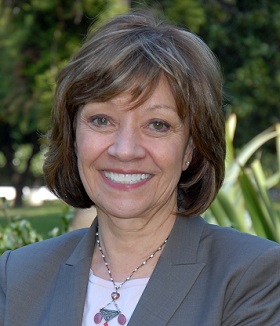The complex challenges that the state’s Sustainable Groundwater Management Act aims to resolve don’t lend themselves to quick fixes. With the deadline for the first major step—forming “groundwater sustainability agencies” in affected basins—coming up in June, we asked Karen Ross, secretary of the California Department of Food and Agriculture, about progress to date.
 PPIC: How are California communities doing in implementing the law so far?
PPIC: How are California communities doing in implementing the law so far?
Karen Ross: I’ve been very impressed with how implementation is progressing. Clearly, people realize it’s time to address groundwater sustainability, and they are working together at the local level because they prefer that to state action. This is a big undertaking because to address groundwater covers areas like land use and economic development for cities and counties. So the progress made on establishing the governance structure is just the first step. The next step is the hard part: putting together plans that will bring basins back into water balance. That will require very difficult decisions about how the resource is allocated and managed.
The state is supporting this process in a number of ways. Our colleagues at the Department of Water Resources (DWR) have a huge role to play in supporting the process by establishing guidance for governance structures and the criteria for what constitutes a sustainable groundwater plan. The state is backing that up with facilitation and financial support. For example, DWR awarded $6.7 million in grants last year to 21 counties for groundwater planning projects, and just last month the Department of Food and Agriculture and DWR announced a joint $6 million water efficiency grant program for agricultural water suppliers and farmers.
PPIC: What big challenges do you think will result?
KR: Some of the critically overdrafted basins will have challenges getting back into balance, and many of these areas are dependent on agriculture as the primary engine for their local economy. The state of the basins is directly impacted by the lack of surface water over time. Tough decisions will have to be made about demand management, potential fallowing, and how to balance the human impacts we saw during the drought, like drinking water supplies and jobs.
It won’t be easy to bring all parties to the table to address these issues―not to mention the specific trade-offs needed to bring the water supply back into balance. But we must ensure that all have a voice in determining the governance structure and taking part in the planning process. That is critical to success.
PPIC: What kinds of opportunities do you think will arise for communities implementing the law?
KR: I see a unique opportunity to unite communities in a deep and lasting way. This is a chance to help determine the future of their community. People must work together to maintain a thriving local economy, their quality of life, and environmental quality. What these communities face is daunting. While it is easy for me in my position to be optimistic about future progress in maintaining sustainability in a special part of California, we must all recognize that building resiliency for the long term will be hard work. But future generations will thank us—just as we owe previous generations a debt of gratitude for the vision, the leadership, and the investment they made in the infrastructure for agriculture and rural California that we enjoy today.
Watch “Implementing the Sustainable Groundwater Management Act,” a video featuring Secretary Ross and other panelists (October 21, 2016)
Read “Reforming California’s Groundwater Management,” (PPIC fact sheet, June 2015)
Visit the PPIC Water Policy Center


